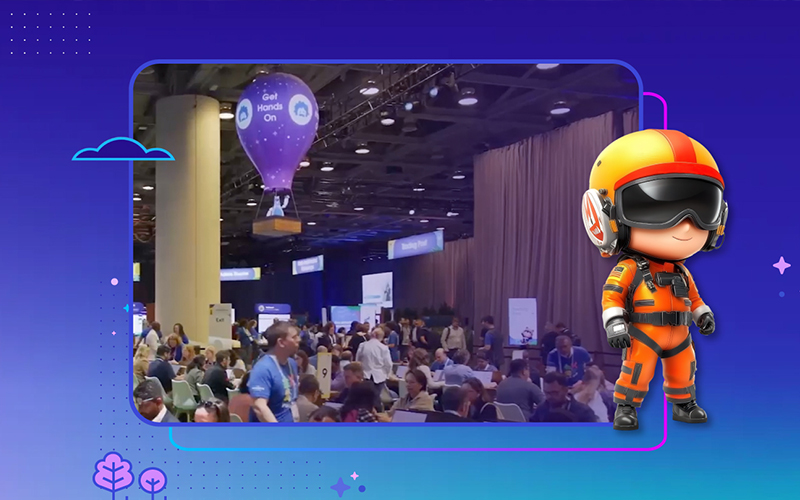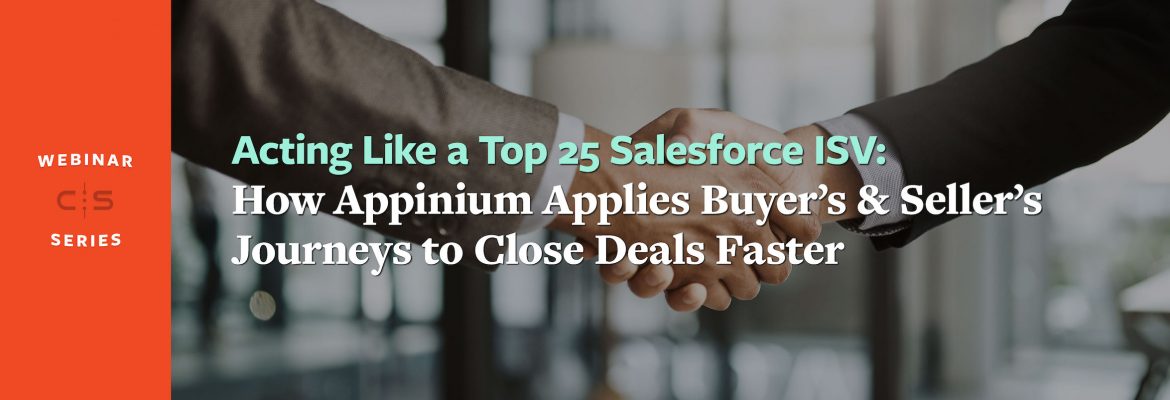
Over the past several months, we’ve brought you core functional guidance from top-performing ISVs in the Salesforce AppExchange through our Acting Like a Top 25 ISV Salesforce ISV webinar series. In our eighth and final installation of the series, CodeScience CRO, Sean Hogan, is joined by Steve Jacobson, CEO and Founder of Appinium, who returns after helping us kick off the first webinar of the series.
In this session, Sean and Steve bring it all together with a showcase of the many ways the Appinium team is measuring, adjusting, and innovating within the trial experience, as well as demonstrating how other ISVs can similarly carve their own path to drive ACV growth for their business.
The Three Pillars of the Trial Experience
Sean kicks off discussion with a quick reminder that the trial experience is far more than simply handing the buyer the keys to test drive the technology. It’s the entire process that your buyers and sellers go through — “every aspect of how they interact, from initial contact through the close process and finally the renewal.” As we’ve covered over the course of this webinar series, this includes everything from product marketing and demo org optimization, to defining and designing clear and repeatable buyer’s and seller’s journeys.
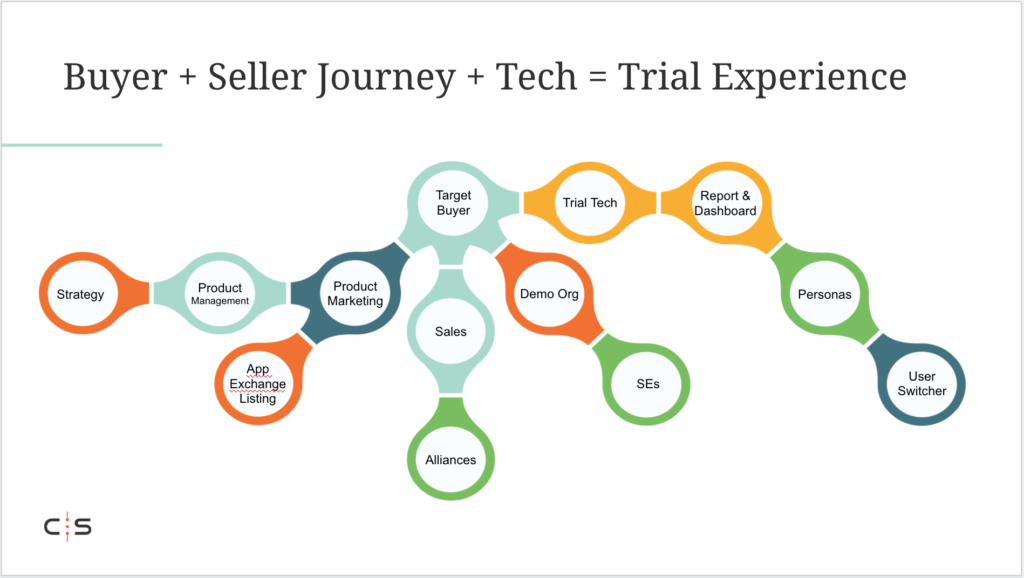
Sean explains that designing your buyer’s and seller’s journey begins with a target buyer with a known budget. “What you need to do is align all these key strategies to that buyer with a known budget” to drive outcomes for those individuals. “Those ISVs that do that succeed in this ecosystem. ISVs that lead with features and functions and want to talk about cool stuff and technology typically struggle, because they are not connecting outcomes to personas and budget.”
This brings us to the three pillars of the trial experience: personas, outcomes and exit criteria. Sean clarifies this as: the personas who are going to use your solution, the outcomes your solution is going to provide back to the business for those personas, and the exit criteria you establish for your sellers to help them incrementally improve their close rate. “The difference between the top 25 ISVs and everybody else,” Sean adds, is that leading ISVs “connect these three pillars and repeat them throughout their entire organization.”
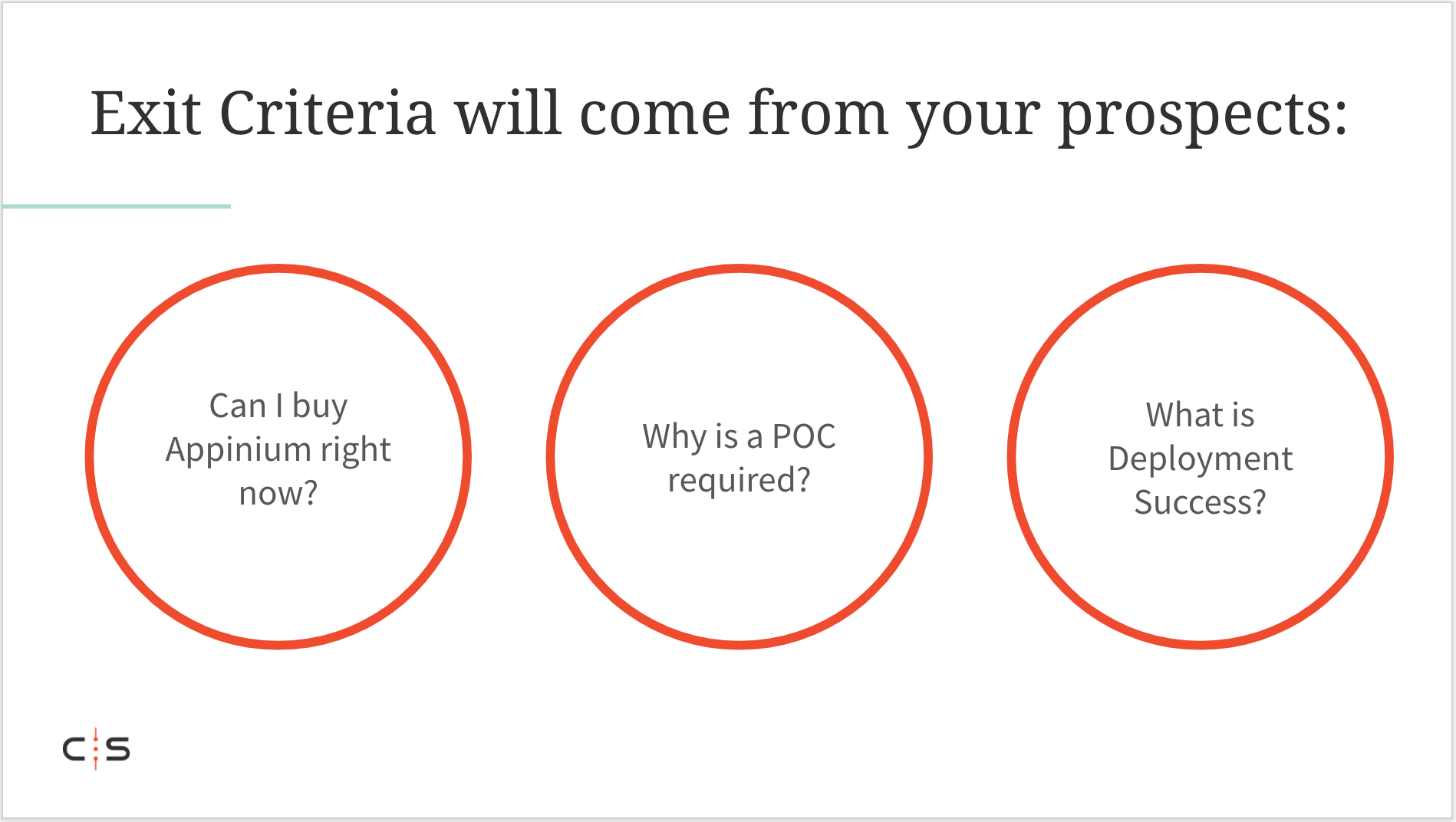
Showcasing Innovation: Appinium’s Journey
Sean and Steve then dive into a showcase of the many ways Appinium is innovating within the trial experience. A major focus for Appinium and a key part of their success is building out very specific personas and making sure every person in the company has a deep understanding and thorough knowledge of those personas. For example, Steve notes that when anyone at his company hears the name Lisa Shirley (one of their key personas), “we know who she is, what she is, her behavior — we honestly know everything about her, so when we actually meet her, we know how to enable her to be successful and, frankly, to be heroic.”
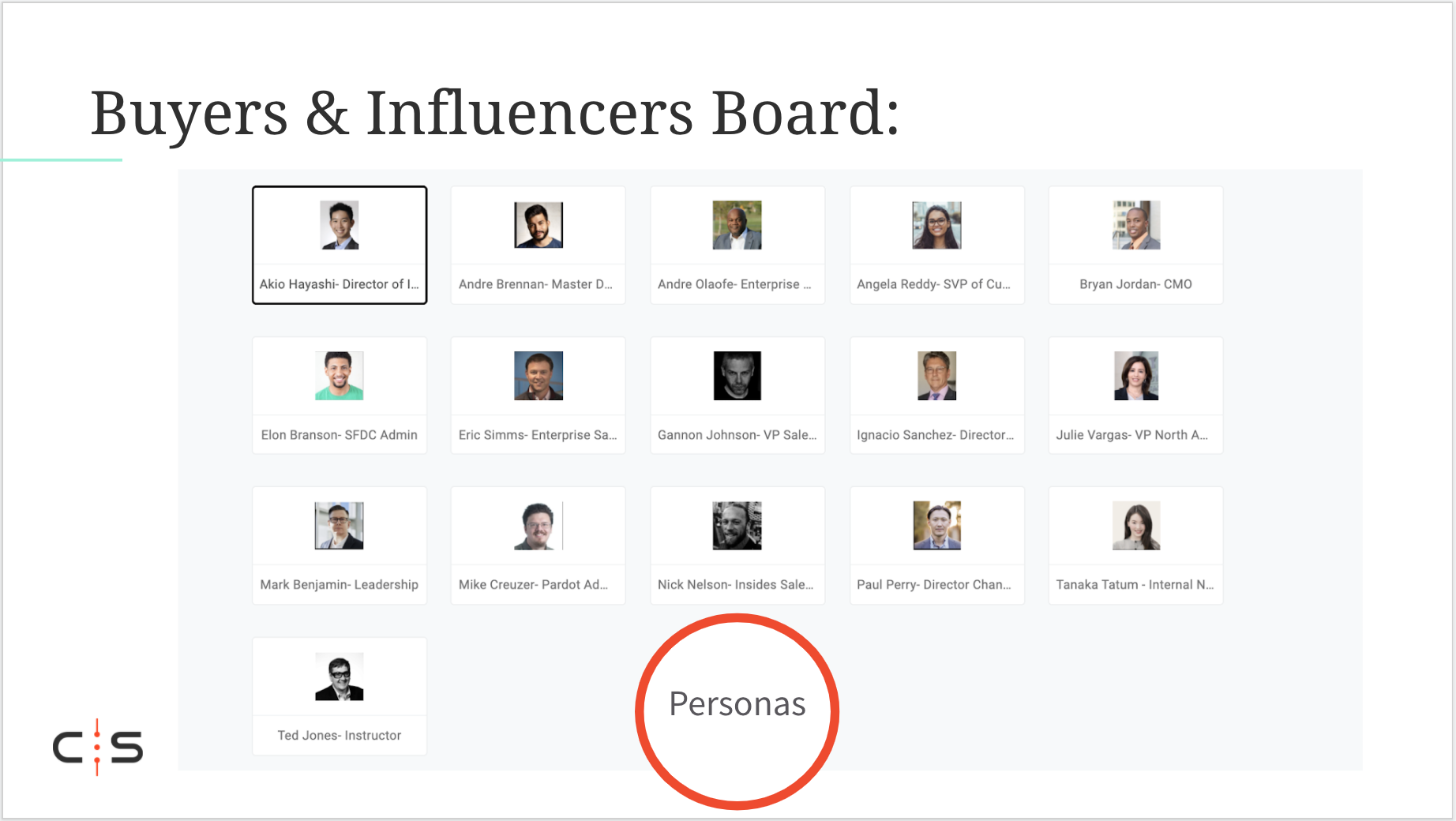
It’s a very personal and human approach to sales, and empowering those personas by connecting them directly to business outcomes drives every aspect of the buyer’s and seller’s journey for Appinium. Steve uses Eric Simms as another persona example. “I know exactly what Eric does. I know exactly what motivates Eric. I know exactly what to show to Eric and what not to show to drive Eric’s behavior,” he explains. “So every time Eric engages with our brand, he has an experience which is very personal to him, on what matters to him every day.”
Appinium has also woven some innovative personalization techniques into their trial to enable this focused experience, such as mapping personas to customized dashboards.
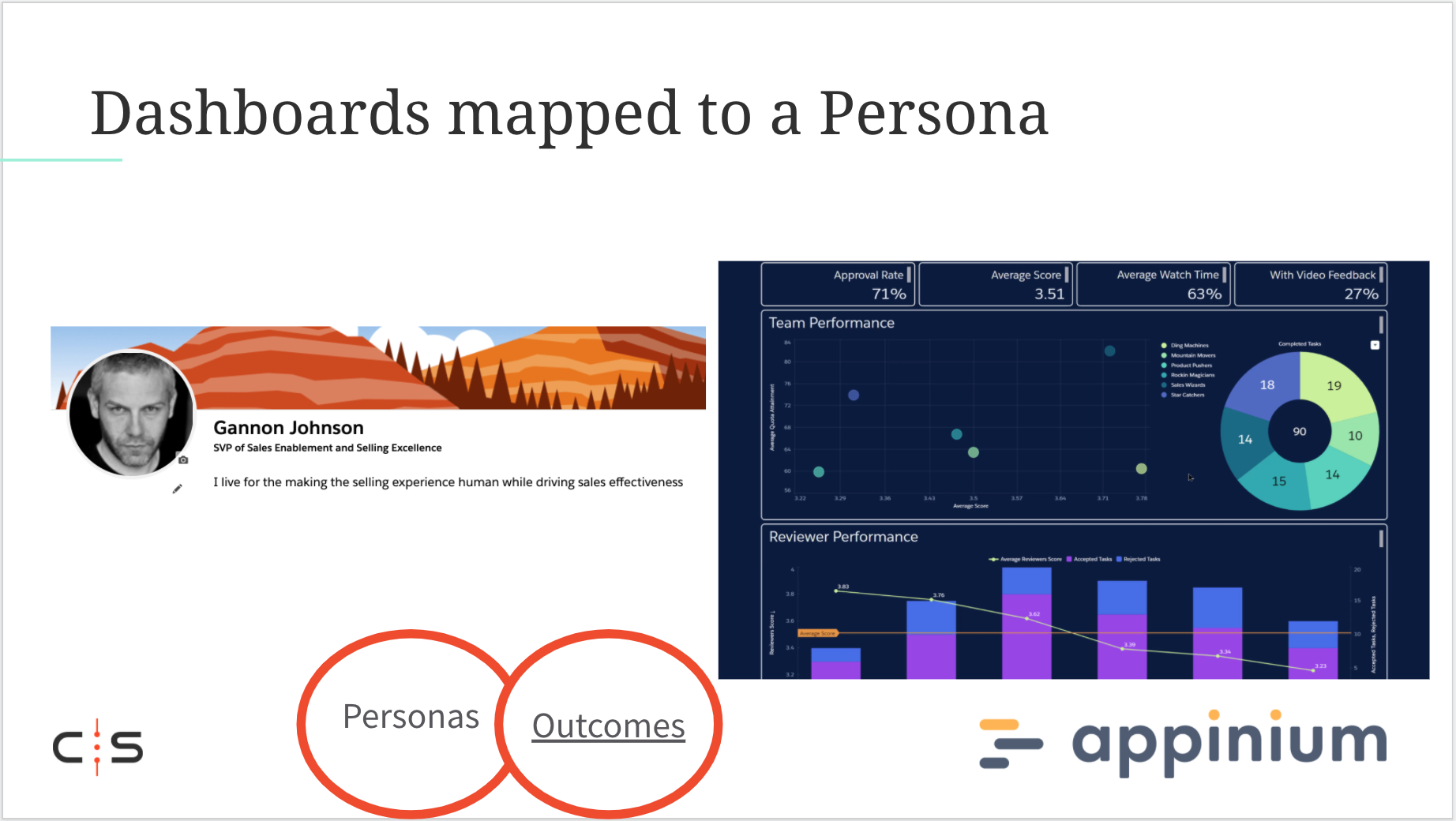
The Importance of Qualifying Out
Throughout the second half of the session, Steve shares some great anecdotes from his experience growing Appinium and lessons learned along the way, including his path from Sales to CEO, why he believes the selling connection is getting lost, and how to “make selling human again.” Since it really doesn’t do justice to these stories to summarize them, we encourage you to watch the full webinar to hear them for yourself!
Sean and Steve wrap up the discussion with a recap of the V2MOM methodology, along with a template ISVs can use to create a V2MOM to align their buyer’s and seller’s journey, before launching into an animated Q&A session.
Steve closes with the importance of qualifying out prospects that aren’t a good match for your company or product. While no company is in the position to lose deals, if you don’t qualify out, “you might win that deal but you’re gonna get nailed revenue-wise in three to six months when it churns,” Steve explains. “Bad deals are going to be a lot more impactful to your business than the deals you win.” He advises ISVs to focus on building and targeting the right personas to build a better pipeline up front, so that when you get to the qualifying stage, “you really can’t qualify out because you actually know exactly who that buyer is.”
Steve clearly feels strongly about the concept of qualifying out, both with regard to the trial prospect and everything in life. “It’s something I’m extremely passionate about,” he states, adding with a laugh, “I tried to qualify out my wife but I couldn’t, so I had to marry her, and now we’re 14 years in!”
To hear more from Sean and Steve and get a copy of the deck, register and watch the webinar here.
Companies build their Salesforce businesses better with CodeScience. It is our mission that no ISV navigates Salesforce alone. If you’re looking for guidance on your product, help supporting your customers, or just need to ask an expert, get in touch today!
